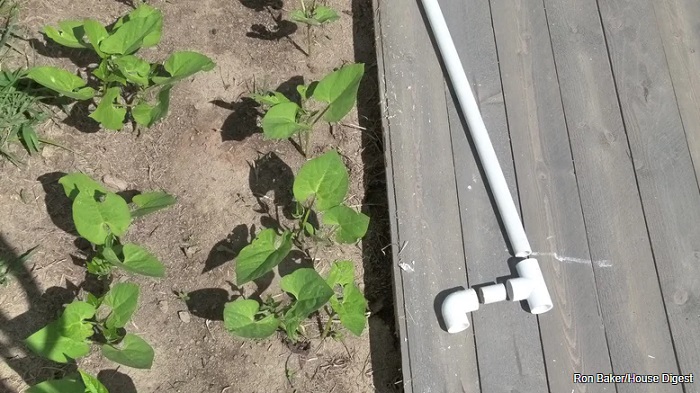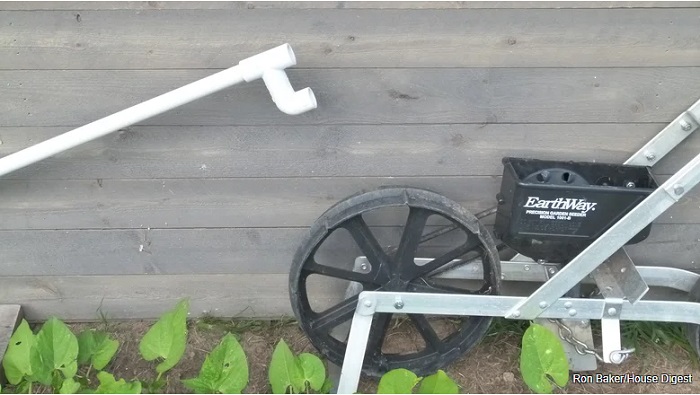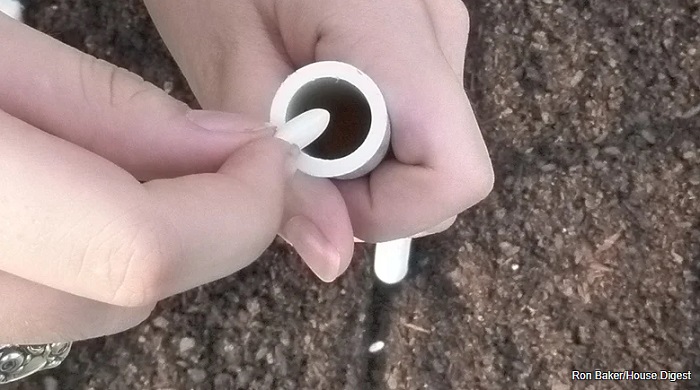
We Tried This Viral PVC Pipe Hack To Make Planting Seeds Easier And It Delivered
2023-09-25 09:00

When gardeners graduate from a well-manicured raised bed to full rows of beans, turnips, and weeds, a whole new set of skills come into play, like planting all that without breaking their backs or
their banks. When we came across a DIY planter on TikTok that lets you stand straight while precisely dropping seeds down a PVC pipe, we wanted to know more.
Gardeners of a certain age or with an unusual distaste for getting their hands dirty seek and appreciate any hack that relieves them of the constant bending and squatting involved with planting
seeds. Seeding can be far more taxing than weeding because it covers a lot more miles: You have to stand before you bend again or develop a sort of crab-like Quasimodo shuffle. Either way,
you won't feel particularly spry at the end of the row, to say nothing of the end of the day.
Farmers use tractors, with air-conditioned cabs aided by GPS, to pull agricultural planters along straight rows. That would make a mess of the typical home vegetable garden, to say nothing of the
expense. Even the sort of seeders you see in the hands of hobby farmers and homesteaders, like the EarthWay Precision Garden Seeder, are expensive enough to give a gardener pause. The $169
price tag has to be offset by more green beans than the average family is prepared to eat. It's much easier to justify the TikTok gardener's inexpensive solution.
Comparing the PVC seeder to an alternative

It turns out that gardeners from Traverse City to Thailand have experimented with the concept of standing while you deliver a single seed at a time down a tube to garden soil. The TikTok dad's
basic version, simply a section of pipe, has been engineered and ornamented by many, including a version with a seed-release trigger, one that opens a hole for the seed automatically, one
developed to help Thai rice planters by Drexel University, and a heavy-duty metal version for commercial growing and subsistence farming.
In its basic form, the seeder requires about half a stick of ½-inch PVC pipe, $4.71 at Home Depot. The only improvement we took advantage of was adding a spacer like the one used by Ideas2Live4.
This required a 90-degree PVC elbow ($.67) and a tee fitting ($.79). The spacer, we hoped, would address one of the few ways you can screw up planting seeds by ensuring the plants are a
proper distance from each other.
To test the device, we planted a row with the PVC pipe and another with an EarthWay seeder and compared notes about the accuracy and speed of the devices. The EarthWay seeder handles
spacing via a little wheel that picks seeds from its hopper and shuttles them down a chute to the soil. We matched the spacing with our PVC seeder. We used Blue Lake Bush Bean seeds because
they are large enough to manage and easy to see (and count).
Getting our hands not dirty with the PVC seeder

We tilled and worked a 20-foot section of lawn outside our greenhouse, then created two side-by-side, shallow furrows to receive our seeds. The EarthWay seeder includes a "ground opener,"
which works moderately well in very well-worked soil, but since our version of the PVC seeder doesn't have any way of creating holes for the seeds, we decided to create identical furrows inadvance We ran the EarthWay seeder down one row and counted the seeds it deposited, then used the PVC seeder to drop the little white bean seeds one at a time in the adjacent furrow.
We decided on a shallow furrow because it should help get seedlings quickly, so long as we kept the soil moist for a few days. Obviously, your seeds should be planted at the right depth,
however, you get them there. Mother Nature took care of the moisture by dropping 2 inches of rain on our plot in a day, floating some of the seeds entirely out of the soil. This was a
particular problem in the EarthWay row since the device drops seeds a little inaccurately and sometimes leaves them near the edge of the furrow. Once covered with soil, the edge of
a furrow is about as shallow as you can plant anything, so those were more prone to washing out.
Why you might like to try this at home

We went spacing the plants just over 3 inches apart to match the EarthWay seed plate. Ultimately the PVC seeder was far more accurate in spacing than the EarthWay, which tended to drop
seeds in pairs and to make up for this by leaving large gaps between seeds. Because we added the spacer to the PVC seeder, it produced very accurate spacing. The downside was that the
EarthWay was exponentially faster, seeding the 20-foot row in a few seconds, while the PVC seeder took a few minutes.
The PVC seeder is definitely a back-saver. A gardener with, say, sciatica and a history pogo-ing at the occasional Primus show will value anything back-saving. It requires a little less bending
than the EarthWay seeder and a lot less than hand-seeding. But, of course, gardeners are going to use their backs anyway for soil preparation, weeding, pruning, and picking. Still, every
little bit helps. The PVC seeder isn't ideal for small seeds that might cling to the pipe's sides; PVC is famous for accumulating static electricity. And it's far slower ... but also far less expensive.
In the end, this looks like a good choice for a vegetable gardener planting full rows of fairly large seeds, but not lots of full rows. The work is slow but not painstaking or difficult, and it's
certainly more comfortable than bending to sow seeds








